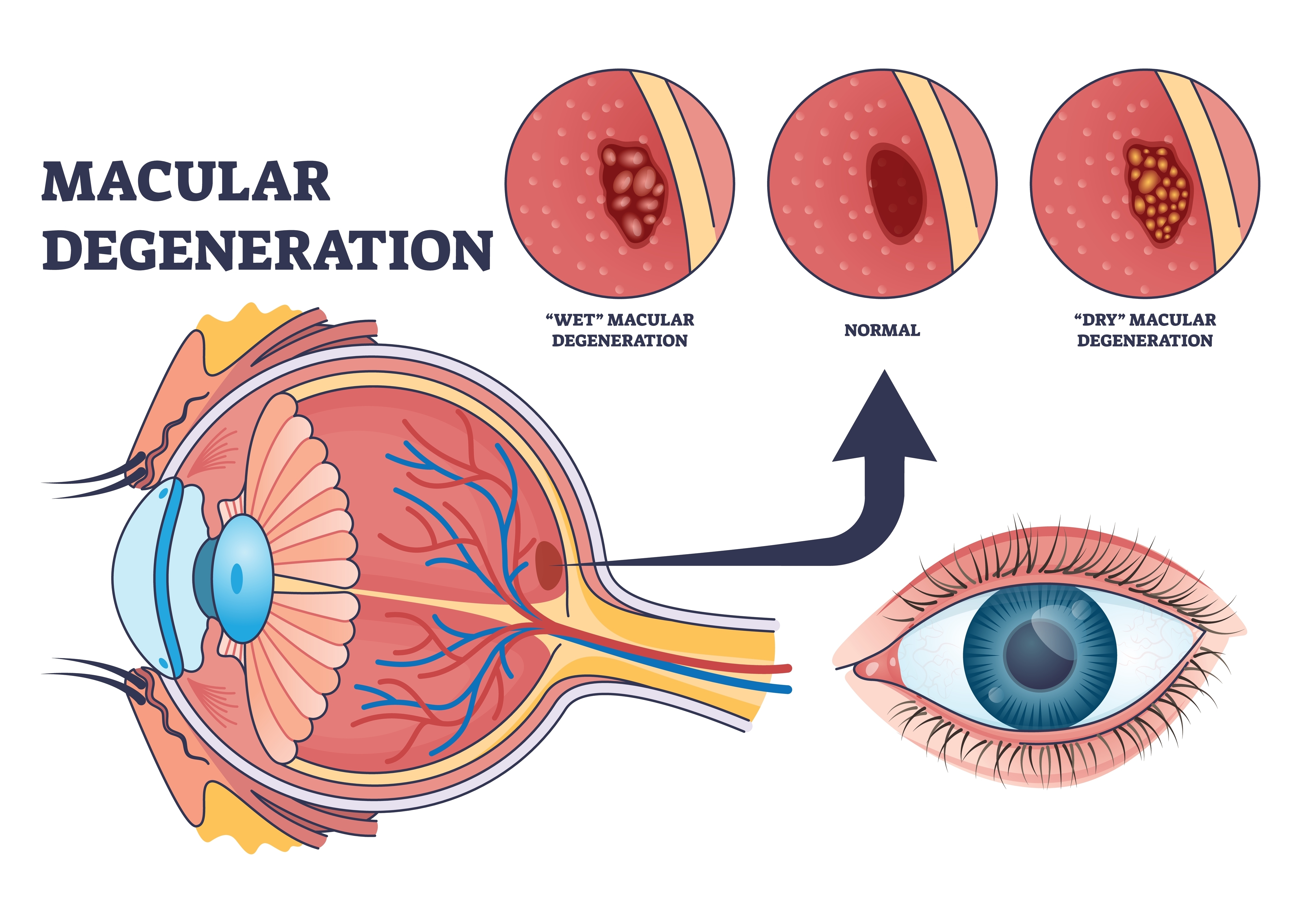
Age-related macular degeneration (AMD) is a leading cause of vision loss among adults over the age of 50. AMD affects the macula, the small central part of the retina responsible for sharp, straight-ahead vision. There are two main types of AMD: dry and wet. Understanding the differences between these types is essential for recognizing symptoms early and preserving your vision.
What Is Dry Macular Degeneration?
Dry macular degeneration, also called atrophic AMD, is the most common form, accounting for about 80-90% of all AMD cases. It occurs when the macula gradually thins with age and tiny clumps of protein, known as drusen, accumulate under the retina. This slow and progressive loss of central vision can happen in one or both eyes and typically advances over several years. Early stages of dry AMD may have few or no symptoms, but as the disease progresses, central vision becomes increasingly blurred.
What Is Wet Macular Degeneration?
Wet macular degeneration, or neovascular AMD, is less common but more severe. It happens when abnormal blood vessels grow under the retina and leak blood or fluid into the macula. This leakage can cause rapid and significant damage to the retina, leading to sudden and severe vision loss. Wet AMD can develop suddenly and requires prompt medical attention to minimize permanent vision damage.
Key Differences Between Wet and Dry Macular Degeneration
The primary difference between dry and wet macular degeneration lies in their causes and how they impact vision. Dry macular degeneration develops gradually as the light-sensitive cells in the macula break down and thin over time. Tiny yellow deposits called drusen also accumulate under the retina, further contributing to vision changes. The vision loss with dry AMD is typically slow and progressive, giving people more time to adapt, though it can eventually lead to significant central vision impairment if it advances.
In contrast, wet macular degeneration is less common but far more aggressive. Wet AMD occurs when abnormal blood vessels grow beneath the retina and leak fluid or blood into the macula. This leakage can cause the retina to bulge or lift, leading to sudden and often severe loss of central vision. Wet AMD can progress rapidly, sometimes within days or weeks, making it a medical emergency that requires prompt treatment to help prevent permanent vision loss.
Another key distinction is in treatment options. While there is currently no cure for dry AMD, certain lifestyle changes, nutritional supplements, and careful monitoring may help slow its progression. Wet AMD, on the other hand, can often be treated with medications injected into the eye to stop the growth of abnormal blood vessels, as well as laser therapies in some cases. Early detection of both types is crucial, but the rapid onset of wet AMD makes regular eye exams even more important for catching changes before vision is permanently affected.
Why Routine Eye Exams Are Essential
Both forms of AMD can lead to permanent vision loss if left undetected and untreated. Because early AMD may not cause noticeable symptoms, regular comprehensive eye exams are crucial - especially for adults over 50 or those with risk factors such as a family history of AMD, smoking, or high blood pressure. Early detection allows for timely intervention, which can help slow disease progression and preserve vision.
Protect Your Vision at De Anza Vision Center
Macular degeneration is a serious eye condition that comes in two main forms: dry and wet. While dry AMD is more common and progresses slowly, wet AMD is less common but can cause rapid vision loss. Understanding these differences and the importance of routine eye exams can make all the difference in protecting your eyesight.
If you or a loved one are concerned about macular degeneration, schedule a comprehensive eye exam at De Anza Vision Center. Visit our office in San Jose, California, or call (408) 446-5533 to book an appointment today.







